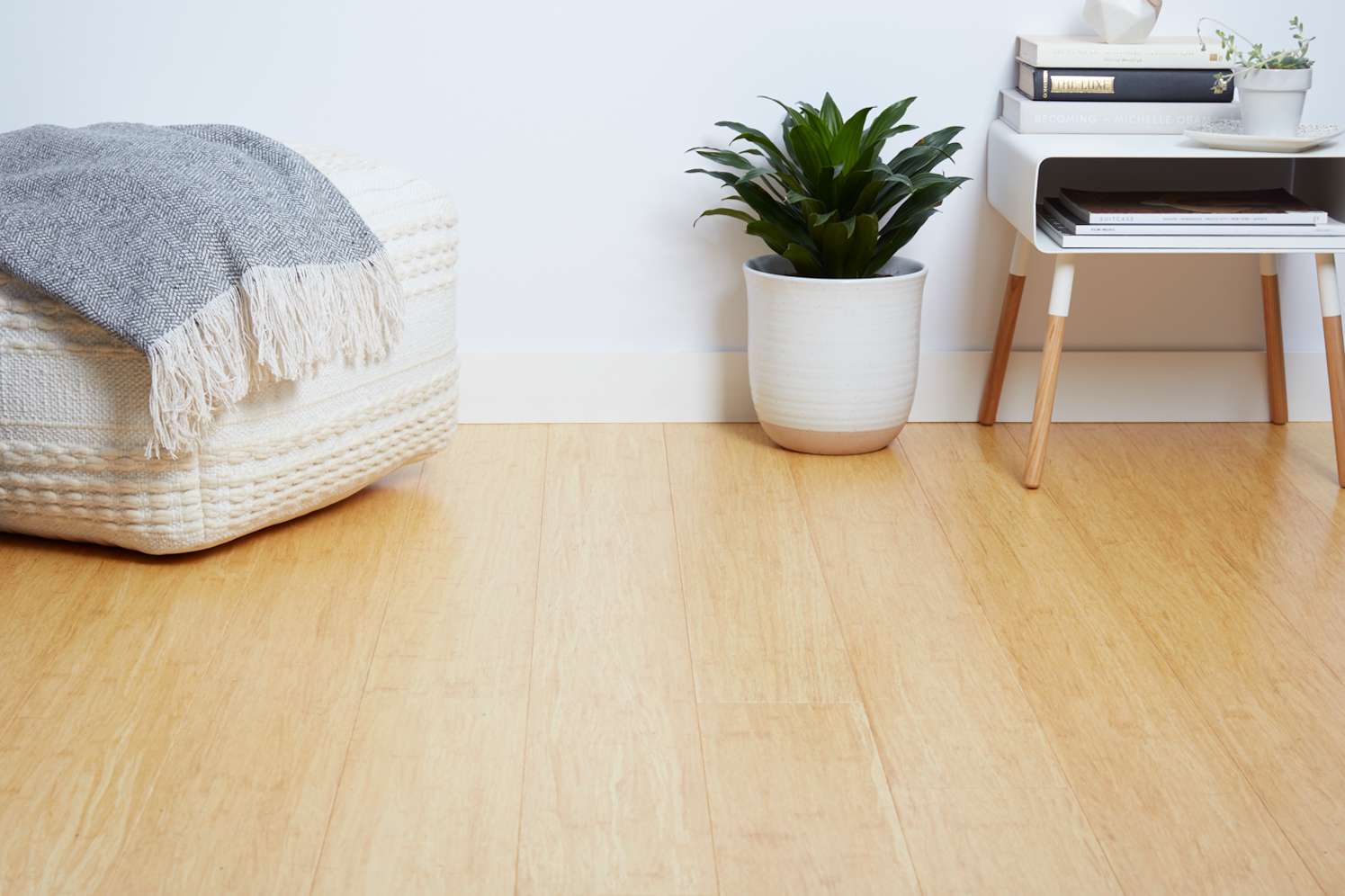So, have you ever considered bamboo flooring for your home? It’s becoming increasingly popular due to its sustainability and unique aesthetic. But before you make a decision, it’s important to weigh the pros and cons. In our article, you’ll learn more about the benefits of bamboo flooring, such as its durability, eco-friendliness, and wide range of styles. On the other hand, there are also some drawbacks to consider, such as its susceptibility to scratches and its sensitivity to moisture. By diving into the details, you’ll be better equipped to make an informed choice for your home.
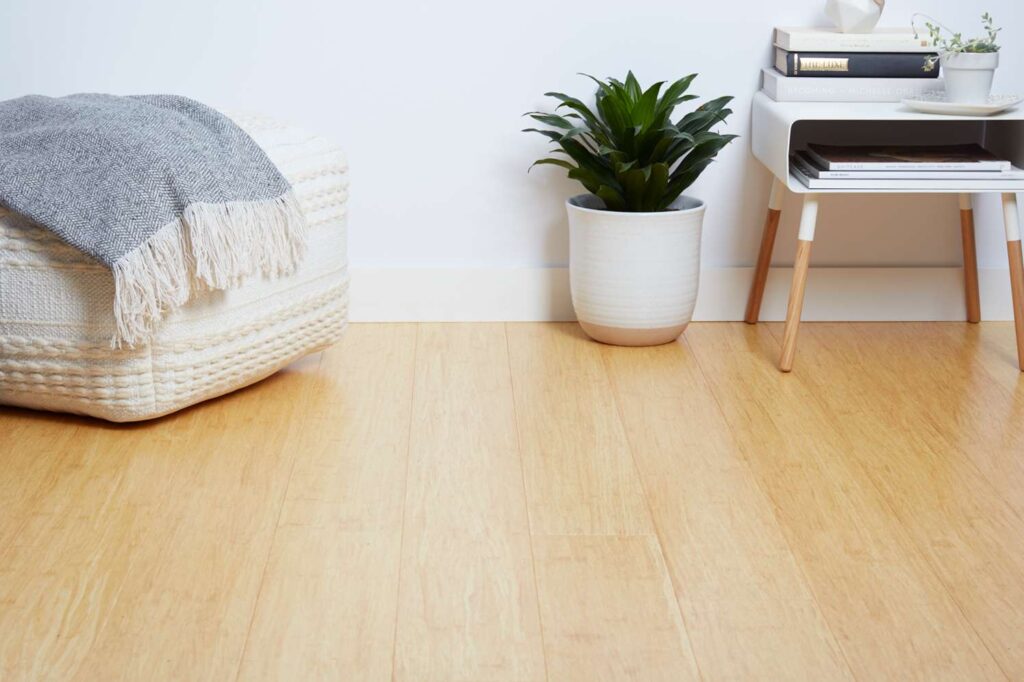
Pros of Bamboo Flooring
Eco-friendly Option
One of the biggest advantages of bamboo flooring is its eco-friendliness. Bamboo is a renewable resource that grows much faster than hardwood trees, making it a sustainable choice for flooring. Unlike hardwood, which can take decades to reach maturity, bamboo can be harvested every 5-6 years. Additionally, bamboo is typically grown without the use of pesticides and fertilizers, making it a more natural and environmentally friendly option.
Durability and Strength
Although bamboo is technically a grass, it is known for its durability and strength. In fact, bamboo flooring can be as strong or even stronger than hardwood flooring. This is due to the manufacturing process, which involves compressing the bamboo fibers together to create a dense and solid material. As a result, bamboo flooring is highly resistant to dents, scratches, and other signs of wear and tear.
Easy Maintenance
Another advantage of bamboo flooring is its easy maintenance. Unlike carpet, which can trap dust and allergens, bamboo flooring is smooth and easy to clean. Regular sweeping or vacuuming, along with occasional mopping, is usually enough to keep bamboo floors looking clean and fresh. Additionally, bamboo is naturally resistant to moisture and stains, making it a great choice for high-traffic areas or homes with pets and children.
Versatility in Design
Bamboo flooring offers a wide range of design options, allowing you to achieve the look and style that suits your home. It is available in various colors, from light blonde to rich amber, and can be used in both traditional and modern settings. Additionally, bamboo can be stained or finished to enhance its natural beauty and complement your existing decor. With the right treatment, bamboo flooring can mimic the appearance of hardwood, giving you the aesthetic appeal without the high price tag.
Affordability
Compared to hardwood flooring, bamboo flooring is generally more affordable. While the price can vary depending on factors such as the brand, quality, and installation method, bamboo flooring is often more budget-friendly, making it a popular choice for homeowners looking for an affordable yet stylish flooring option. The overall cost can be even lower if you opt for DIY installation.
Cons of Bamboo Flooring
Susceptible to Moisture Damage
Although bamboo is naturally resistant to moisture, it is still susceptible to damage if exposed to excessive amounts of water. This means that bamboo flooring may not be the best choice for areas with high humidity or where spills are frequent, such as bathrooms or laundry rooms. It’s important to promptly clean up any spills and avoid excessive water when cleaning the floors. Additionally, it’s recommended to use a moisture barrier or sealant to provide extra protection against moisture damage.
Some Products May Emit VOCs
While bamboo flooring is generally considered to be a low-VOC (volatile organic compound) product, it’s important to note that some products may still emit VOCs. VOCs are chemicals that can be released into the air as gases from certain materials, including adhesives and finishes. These chemicals can have potential health effects, especially for individuals with respiratory conditions or sensitivities. To minimize exposure to VOCs, choose bamboo flooring that is certified as low-VOC or opt for finishes and adhesives that are specifically labeled as low-VOC.
Limited Color Options
Although bamboo flooring offers a decent range of color options, it may not offer as much variety as other types of flooring, such as hardwood or laminate. The natural color of bamboo is typically a light blonde or yellowish hue, which may not be suitable for all design preferences. While it is possible to stain or finish bamboo in different colors, the selection may still be more limited compared to other flooring options. If color flexibility is important to you, it’s worth considering other materials with a wider range of color choices.
Not as Hard as Hardwood
While bamboo is known for its strength and durability, it is not as hard as certain hardwood species, such as oak or maple. This means that bamboo flooring may be more prone to denting or scratching, especially in high-traffic areas or if heavy objects are dropped on the floor. However, with proper care and maintenance, bamboo flooring can still withstand normal wear and tear. Consider using rugs or furniture pads to protect high-traffic areas and minimize the risk of damage.
May Show Signs of Wear and Tear
Over time, bamboo flooring may show signs of wear and tear, particularly in areas with heavy foot traffic. Despite its durability, the surface of bamboo floors can become scratched or worn down, especially if not properly maintained. However, many homeowners find that the natural patina that develops over time adds character and charm to their flooring. If you prefer a more pristine appearance, regular cleaning and maintenance can help minimize wear and tear and keep your bamboo floors looking their best.
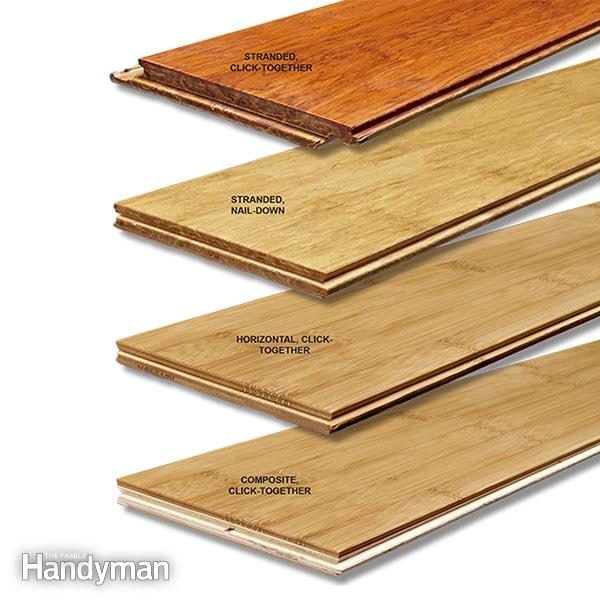
Comparison with Other Types of Flooring
Bamboo vs Hardwood Flooring
Bamboo and hardwood flooring are both popular choices for homeowners seeking a natural and timeless look. Hardwood flooring is known for its classic beauty, durability, and ability to increase the value of a home. However, it is usually more expensive than bamboo flooring and can require more maintenance. Bamboo, on the other hand, offers similar aesthetic appeal at a lower price point and with easier maintenance. It is also considered to be a more sustainable option, as bamboo is a renewable resource. Ultimately, the choice between bamboo and hardwood will depend on your budget, design preferences, and environmental considerations.
Bamboo vs Laminate Flooring
Laminate flooring is a synthetic product that mimics the look of hardwood or other materials. It is typically more affordable than both bamboo and hardwood flooring and offers excellent durability and wear resistance. However, laminate flooring can be more susceptible to moisture damage and may not have the same natural beauty as bamboo. While bamboo offers a more eco-friendly option and a wider range of design possibilities, laminate flooring offers affordability and easy installation. Consider your priorities in terms of price, aesthetics, and sustainability when deciding between the two.
Bamboo vs Vinyl Flooring
Vinyl flooring is another affordable and versatile option for homeowners. It is highly resistant to moisture, stains, and scratches, making it suitable for high-traffic areas, kitchens, and bathrooms. Vinyl flooring is available in a wide range of styles, including options that mimic the look of hardwood or natural stone. Although bamboo flooring offers a more eco-friendly choice, vinyl flooring provides superior moisture resistance and ease of maintenance. Ultimately, your decision will depend on your budget, design preferences, and priorities in terms of sustainability and durability.
Bamboo vs Tile Flooring
Tile flooring, such as ceramic or porcelain, is a popular choice for bathrooms, kitchens, and other areas prone to moisture. Tile flooring offers excellent durability, water resistance, and a wide range of design options. However, it can be more expensive and labor-intensive to install compared to bamboo flooring. Bamboo, on the other hand, is more affordable and easy to install, but it may not offer the same level of water resistance as tile. Consider the specific needs of the room, your budget, and the desired aesthetic when deciding between bamboo and tile flooring.
Installation Process and Cost
DIY vs Professional Installation
Bamboo flooring can be installed either as a DIY project or by hiring a professional installer. DIY installation can help save money, especially if you have experience with flooring projects. There are different installation methods available, such as nail-down, glue-down, or floating, depending on the type of bamboo flooring you choose. It’s important to carefully follow the manufacturer’s instructions and use the appropriate tools and techniques to ensure a successful installation.
However, professional installation can offer several advantages, especially if you don’t have the time, tools, or expertise for a DIY project. Professional installers have the knowledge and experience to handle the installation process efficiently and effectively. They can also ensure that the flooring is properly installed, minimizing the risk of issues such as uneven floors or gaps between the planks.
The cost of bamboo flooring installation can vary depending on factors such as the size of the area, type of flooring, and labor costs in your area. DIY installation can help save on labor costs, but keep in mind that mistakes or damage during the installation process can end up costing more in the long run. If you choose professional installation, be sure to get multiple quotes from reputable installers and consider any additional costs, such as furniture removal or disposal of old flooring.
Cost Factors to Consider
When budgeting for bamboo flooring, it’s important to consider the various cost factors involved. The price per square foot of bamboo flooring can vary depending on factors such as the brand, quality, and style of the flooring. Higher-quality bamboo flooring, such as strand-woven or hand-scraped options, is typically more expensive than basic options.
In addition to the cost of the flooring itself, there are other expenses to consider when installing bamboo flooring. These may include underlayment, which can provide insulation and noise reduction, as well as moisture barriers or sealants to protect against moisture damage. If you choose professional installation, labor costs will also be a significant factor.
It’s also worth considering the long-term savings of bamboo flooring. Bamboo is known for its durability and low maintenance requirements, which can help save on repair and replacement costs over time. Additionally, bamboo is an eco-friendly option that can help reduce your environmental impact. While the initial cost of bamboo flooring may be higher than some alternatives, the long-term benefits may outweigh the upfront investment.
Maintenance and Repair Costs
Bamboo flooring is generally easy to maintain and requires minimal ongoing costs. Regular sweeping or vacuuming, along with occasional mopping, is usually sufficient to keep bamboo floors clean. However, it’s important to avoid excessive moisture and clean up spills promptly to prevent damage. Using furniture pads and area rugs in high-traffic areas can help minimize wear and tear.
Over time, bamboo flooring may require refinishing to restore its appearance and protect the surface. The frequency of refinishing will depend on factors such as the quality of the flooring and the amount of foot traffic it receives. Refinishing can involve sanding down the surface, reapplying a finish, and sealing the floor. While this can be a more labor-intensive process, it can significantly extend the lifespan and beauty of your flooring.
It’s a good idea to budget for potential repair costs as well, although bamboo flooring is generally durable and resistant to damage. In the event of minor scratches or dents, touch-up kits can be used to repair the surface. For more significant damage, such as deep scratches or water damage, it may be necessary to replace individual planks or sections of the flooring. Keeping some extra flooring material on hand can help ensure a seamless repair if needed.
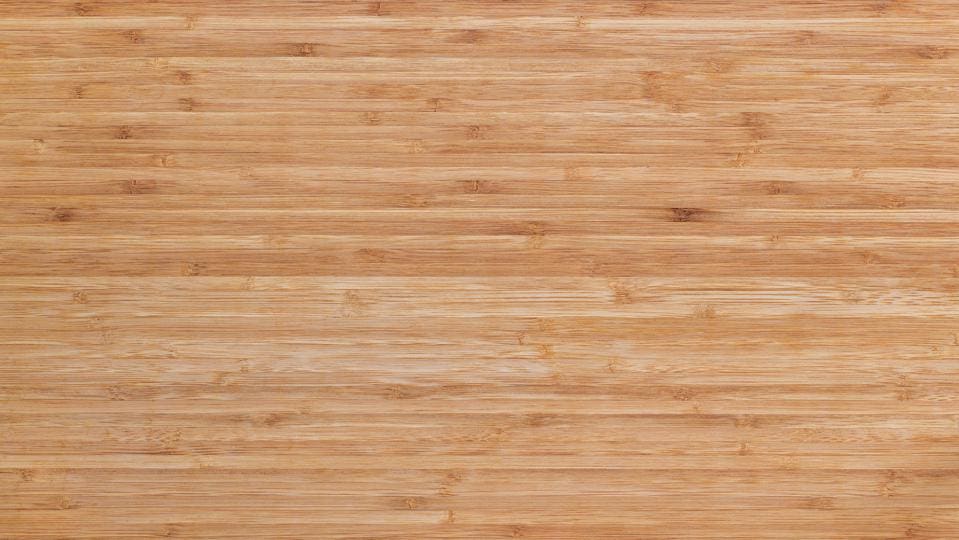
Environmental Impact
Renewable Resource
One of the key environmental benefits of bamboo flooring is its status as a renewable resource. Bamboo is a fast-growing grass that can reach maturity and be harvested within 5-6 years, compared to hardwood trees that can take decades to grow. This makes bamboo a highly sustainable choice for flooring, as it can be continuously replenished without causing significant harm to the environment. Additionally, the root structure of bamboo remains intact after harvest, allowing new shoots to grow and preventing soil erosion.
Harvesting and Manufacturing Processes
The harvesting and manufacturing processes of bamboo flooring can have an impact on its environmental sustainability. Opting for bamboo flooring that is sustainably harvested is important to ensure that the bamboo is sourced responsibly. Sustainable harvesting practices include selectively cutting mature bamboo stalks while leaving younger ones to grow. This allows the bamboo forest to regenerate and maintain its biodiversity.
The manufacturing process of bamboo flooring involves cutting the bamboo stalks into strips, laminating them together, and then applying a finish or stain. Look for bamboo flooring that uses formaldehyde-free adhesives, as formaldehyde is a known VOC that can be harmful to human health and the environment. Additionally, some manufacturers use low-VOC or water-based finishes, which can further reduce the environmental impact of the flooring.
Carbon Footprint
Bamboo flooring has a relatively low carbon footprint compared to other types of flooring. Bamboo plants absorb carbon dioxide from the atmosphere as they grow, helping to reduce greenhouse gas emissions. This carbon is stored within the bamboo fibers even after they are harvested and made into flooring. In comparison, the production of traditional hardwood flooring requires the cutting down of mature trees, which releases carbon stored in the trees and contributes to deforestation.
When considering the carbon footprint of bamboo flooring, it’s important to also take into account the transportation and shipping processes. Choosing locally sourced bamboo flooring can help reduce the carbon emissions associated with transport. Additionally, purchasing from manufacturers or suppliers that prioritize sustainable and eco-friendly practices can further reduce the overall environmental impact.
Certifications and Sustainability
To ensure the sustainability and environmental responsibility of bamboo flooring, it’s recommended to look for certifications from reputable organizations. The Forest Stewardship Council (FSC) certification, for example, ensures that the bamboo has been responsibly harvested and that production meets strict environmental and social standards. Other certifications to look for include the Sustainable Forestry Initiative (SFI) and the GreenGuard certification, which focuses on indoor air quality and low VOC emissions.
By choosing bamboo flooring with these certifications, you can have peace of mind knowing that you are making an environmentally conscious choice. Additionally, supporting companies and brands that prioritize sustainable practices can help drive industry-wide change and encourage more environmentally friendly options.
Health and Safety Considerations
Allergies and Sensitivities
When it comes to allergies and sensitivities, bamboo flooring can be a suitable choice for many individuals. Unlike carpet, which can trap allergens such as dust mites, pet dander, and pollen, bamboo flooring provides a smooth and easy-to-clean surface. This can help minimize the presence of allergens in your home and improve air quality, particularly for individuals with respiratory conditions or sensitivities.
However, it’s worth noting that some individuals may have specific allergies or sensitivities to certain components of bamboo flooring, such as the finishes or adhesives used during the manufacturing process. If you have known allergies or sensitivities, it’s advisable to choose bamboo flooring that is certified as low-VOC or specifically labeled as suitable for individuals with allergies.
Indoor Air Quality
Indoor air quality is an important consideration for any flooring material. Certain types of flooring, such as carpet or vinyl, can release volatile organic compounds (VOCs) into the air, which can have potential health effects. Bamboo flooring is generally considered to be a low-VOC product, particularly if it is labeled as such or certified by reputable organizations.
To further improve indoor air quality, make sure to choose low-VOC or water-based finishes and adhesives when installing bamboo flooring. Adequate ventilation during the installation process can also help minimize the presence of airborne pollutants. Regular cleaning and maintenance, along with proper ventilation in your home, can contribute to healthier indoor air quality.
Slip Resistance and Safety
Slip resistance is an important consideration for areas that are prone to moisture, such as bathrooms or kitchens. While bamboo flooring is generally smoother than some other materials, such as ceramic or porcelain tile, it still provides decent traction underfoot. Adding rugs or mats in areas where slip resistance is a concern can further enhance safety.
It’s also important to consider the safety of the installation process itself. If you choose to install bamboo flooring yourself, be sure to follow the manufacturer’s instructions carefully and use the appropriate tools and techniques. If you opt for professional installation, make sure to hire licensed and experienced installers who prioritize safety and adhere to industry guidelines.
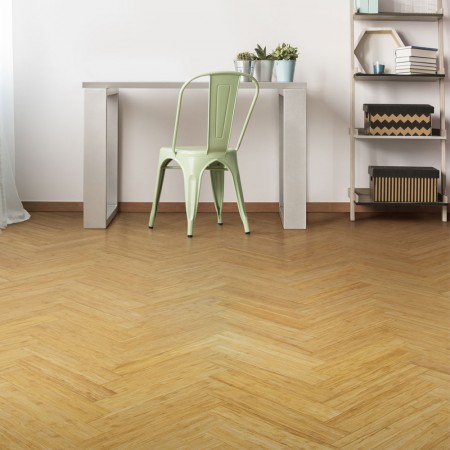
Suitability for Different Rooms
Kitchen
Bamboo flooring can be a suitable choice for kitchens, particularly if you prioritize sustainability, durability, and low maintenance. Its natural resistance to moisture and stains makes it suitable for this high-traffic area. However, it’s important to quickly clean up spills and avoid excessive water to prevent damage. Adding rugs or mats in front of sinks and from cooking areas can provide extra protection and help minimize wear and tear.
Living Room
The living room is a space where comfort, style, and durability are important factors to consider. Bamboo flooring can provide an elegant and warm look, similar to hardwood, while also offering good resistance to wear and tear. It can be combined with area rugs for added comfort and aesthetic appeal. Consider your specific design preferences and maintenance requirements when choosing bamboo flooring for your living room.
Bedroom
Comfort underfoot is often a priority in the bedroom. Bamboo flooring can provide a softer and warmer feel compared to materials like tile or laminate. However, if allergies or sensitivities are a concern, hard-surface flooring may be a better option. Bamboo is generally easy to clean and maintain, making it a suitable choice for bedrooms.
Bathroom
In the bathroom, moisture resistance is crucial. While bamboo flooring is naturally resistant to moisture, it may not be the most suitable choice for areas with excessive water exposure, such as full bathrooms with showers or bathtubs. However, in half bathrooms or areas where water exposure is minimal, bamboo flooring can work well. Be sure to promptly clean up any spills or moisture to prevent damage.
Basement
Basements often face challenges such as moisture and cold temperatures. Vinyl flooring and ceramic tiles are popular choices for basements due to their durability and resistance to moisture. However, bamboo flooring can also be a suitable option, particularly if you choose a product with additional moisture protection, such as a moisture barrier. Be sure to properly prepare the basement subfloor and address any moisture issues before installing bamboo flooring.
Balcony
The balcony typically faces exposure to the elements, including rain, sunlight, and temperature changes. Outdoor tiles, such as porcelain or slate, can provide excellent durability and resistance to weather conditions. Wooden decking is another popular option, providing a warm and inviting look. However, if your balcony is covered or partially sheltered, bamboo flooring can be a viable choice. Consider outdoor rugs or mats to add comfort and protection.
Longevity and Durability
Expected Lifespan
The expected lifespan of bamboo flooring can vary depending on various factors, such as the quality of the flooring, installation method, and maintenance. On average, well-maintained bamboo flooring can last anywhere from 10 to 25 years or more. Higher-quality bamboo flooring, such as strand-woven or engineered options, often offer greater durability and longevity.
To ensure the longevity of your bamboo flooring, it’s important to follow proper maintenance and care guidelines. Regular cleaning, prompt removal of spills, and avoiding excessive moisture or direct sunlight can all contribute to extending the lifespan of the flooring. Additionally, refinishing the flooring when necessary can help restore its appearance and protect against wear and tear.
Resistance to Wear and Tear
Bamboo flooring is known for its durability and resistance to wear and tear. The manufacturing process, which involves compressing the bamboo fibers, creates a solid and dense material that is highly resistant to dents and scratches. Proper maintenance, such as regular cleaning and avoiding dragging heavy furniture across the floor, can further help minimize wear and tear.
While bamboo is generally more resistant to damage compared to certain hardwood species, it may not be completely immune to signs of wear and tear. Over time, the surface of bamboo floors can develop minor scratches or patina, particularly in high-traffic areas. However, many homeowners find that the natural aging of bamboo flooring adds character and charm to their space.
Moisture Resistance
Bamboo flooring is considered to be naturally resistant to moisture. However, it’s important to note that excessive water exposure can still cause damage. Therefore, it’s recommended to promptly clean up any spills and avoid excessive water when cleaning the floors. Using area rugs or mats in areas prone to spills, such as kitchens or entryways, can provide additional moisture protection and help prevent damage.
If you live in an area with high humidity or if you’re considering bamboo flooring for moisture-prone areas, such as bathrooms or basements, it’s important to choose a product with additional moisture protection. This can include a moisture barrier or sealant, or choosing engineered bamboo flooring with enhanced water resistance.

Maintenance and Cleaning Tips
Regular Sweeping and Vacuuming
Regular sweeping or vacuuming is essential to keep bamboo flooring clean and free from dirt and debris. Dust and small particles can act as abrasives and scratch the floor’s surface over time. Use a soft-bristle broom or a vacuum cleaner with a soft brush attachment to remove dust and dirt. Avoid using a vacuum cleaner with a beater bar, as it can scratch the flooring.
Avoiding Water Damage
While bamboo flooring is naturally resistant to moisture, it’s important to avoid excessive water exposure to prevent damage. When cleaning the floors, use a damp (not wet) mop or cloth to wipe away spills or stains. Avoid using excessive water or leaving water standing on the floor, as it can seep into the bamboo fibers and cause warping or discoloration.
Preventing Scratches and Dents
To minimize the risk of scratches and dents, take precautions when moving furniture or heavy objects across the floor. Use furniture pads or felt protectors on the legs of chairs, tables, and other furniture to prevent scratching. Avoid dragging or sliding heavy objects, as they can leave marks on the floor’s surface. Additionally, placing rugs or mats in high-traffic areas or under furniture can provide extra protection against wear and tear.
Common Misconceptions
Bamboo is Not Wood
One common misconception about bamboo flooring is that bamboo is a type of wood. In reality, bamboo is a type of grass. However, bamboo flooring is manufactured in a way that makes it a suitable alternative to traditional hardwood flooring. The process involves cutting bamboo stalks into strips, laminating them together, and treating them to create a durable and attractive flooring material.
Bamboo is Not Always Environmentally Friendly
While bamboo is generally considered to be an environmentally friendly option, not all bamboo flooring is created equal. Some manufacturers may use unsustainable harvesting practices or adhesives and finishes that contain high levels of VOCs. To ensure that you are choosing an environmentally responsible option, look for bamboo flooring that is certified by reputable organizations, such as the FSC or SFI. These certifications ensure that the bamboo is sourced responsibly and that production meets strict environmental standards.
All Bamboo Flooring is the Same
Another misconception is that all bamboo flooring is of the same quality. In reality, the quality of bamboo flooring can vary depending on factors such as the manufacturing process, the type of bamboo used, and the brand. Higher-quality bamboo flooring, such as strand-woven options, often offer greater durability, scratch resistance, and overall longevity. When choosing bamboo flooring, consider factors such as brand reputation, product reviews, and warranty to ensure that you are getting a high-quality product.
Customer Reviews and Experiences
Positive Reviews and Testimonials
Many homeowners who have installed bamboo flooring have positive reviews and experiences to share. They appreciate the natural beauty and warm aesthetics of bamboo flooring, which can add a touch of elegance and sophistication to any space. The durability and resistance to wear and tear are also commonly mentioned as advantages. Homeowners also appreciate the eco-friendliness of bamboo flooring, as it is a renewable resource and a more sustainable option compared to traditional hardwood.
Negative Reviews and Complaints
While there are many positive reviews, some homeowners have also experienced negative aspects of bamboo flooring. Common complaints include the susceptibility of bamboo flooring to moisture damage, particularly if not properly sealed or installed in moisture-prone areas. Some homeowners have reported issues with cupping, warping, or discoloration due to excessive water exposure. Additionally, there have been reports of scratches and dents, although these can often be minimized with proper care and maintenance.
Personal Experiences and Recommendations
Personal experiences and recommendations can vary depending on factors such as lifestyle, climate, and maintenance practices. Some homeowners have found bamboo flooring to be an excellent and long-lasting choice for their homes. Others have experienced challenges with moisture or wear and tear. Based on personal experiences, it’s important to assess your own priorities and consider the specific conditions of your home when choosing bamboo flooring.
Before making a decision, it’s advisable to visit a showroom or retailer that offers bamboo flooring and speak with knowledgeable staff. They can provide further information, answer any questions, and offer guidance based on your specific needs and preferences.
Conclusion
Bamboo flooring offers several advantages and considerations for homeowners seeking a sustainable, durable, and stylish flooring option. Its eco-friendliness, durability, easy maintenance, and versatility in design make it a popular choice. However, it’s important to be aware of the potential drawbacks, such as its susceptibility to moisture damage or limited color options. Comparing bamboo flooring to other types of flooring, considering installation and maintenance costs, and understanding its environmental impact can help you make an informed decision.
Remember that each room in your home has its unique demands and requirements when it comes to flooring. Consider factors such as moisture resistance, comfort, and style when choosing bamboo flooring for specific rooms like kitchens, living rooms, bedrooms, bathrooms, basements, or balconies. Understand the expected longevity and durability of bamboo flooring, and follow proper maintenance and cleaning tips to keep your floors looking their best.
Take into account any health and safety considerations, such as allergies or indoor air quality. Be aware of common misconceptions and read customer reviews and experiences to gain a comprehensive understanding of bamboo flooring.
Ultimately, by carefully considering the pros and cons, comparing different types of flooring, and understanding your specific needs and preferences, you can make an informed decision about whether bamboo flooring is the right choice for your home.
